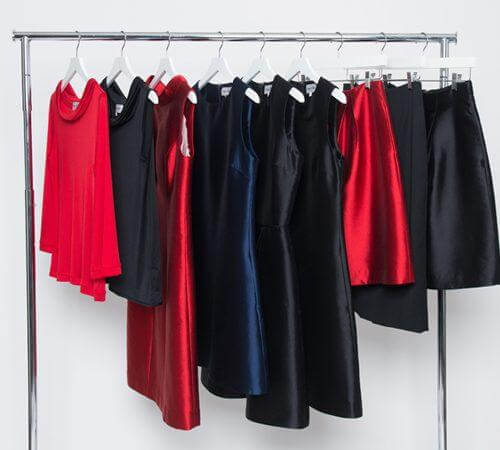The CFDA, an organization Senza Tempo is not a member of, finally published a set of guidelines on sustainability. Unsurprisingly, Senza Tempo had already met many of the guidelines based on its business model. After all, Senza Tempo was launched with the idea to operate in a more traditional way — an inherently more sustainable strategy. It's a business model anchored on buying fewer items and buying better quality items. It's about producing in the United States since as a North Carolinian and wanted to do my part to bring manufacturing back to the U.S.
Here are the CFDA's guideline's and how Senza Tempo stacks up:
Creativity: How you can make the world better through design
This starts and ends with the entire philosophy behind the brand. The name Senza Tempo means TIMELESS in Italian. I chose the name because I only offer timeless silhouettes. Styles that were in style 50 years ago and that will be 50 years hence.
I also choose to produce garments only using natural fabrics. I never use polyester, a petroleum derivative. Polyester is neither luxe nor environmentally friendly. Natural fabrics are key to a garment's longevity and durability as they last longer than man-made fabrics.
Environment: Air, Chemicals, Energy, Waste
Without stating the obvious, the environment and sustainability strategies are complex. Thus, I do my best to simplify and streamline my supply chain wherever possible. The entire line is about reducing waste and creating a product that clients will keep in their closets forever. It was the entire reason for launching the collection. We focus on volume and waste reduction — always.
I use deadstock fabric suppliers that are near the atelier that manufactures Senza Tempo to reduce shipping if I can. Why ship a similar fabric from across the country or another part of the world when it can be found from a supplier around the corner and can be walked over to our atelier in Los Angeles? Our signature fabrics direct from our European mills. But the entire production process is geared to efficiency and eliminating waste. Waste costs money and we want to direct our efforts and money at creating the best possible product.
Production items go from our atelier to a warehouse to a client's home. The entire line is created at a single atelier in downtown Los Angeles from sampling to production. There are no middle men in our process.
The biggest challenge is obtaining data from upstream suppliers so that we can measure our exact impact. Though we believe in focusing on volume reduction and choosing the best suppliers. As a small brand, we cannot dictate terms with our suppliers so we choose to deal with the best.
People: Employees, Suppliers, Customers, Culture
I started researching Senza Tempo when the Rana Plaza collapsed in Bangladesh. Before then, I had no idea about the abuses in the fashion industry. It wasn't covered in the mainstream news or the business news. I was a successful and educated person (two master's degrees and a career on Wall Street), better educated than most on international matters and I simply didn't know. It was the industry's dirty little (actually big) secret. That news only strengthened my resolve to have an American-made luxury brand — I didn't want to be a part of that system. I grew up in North Carolina and watched all the textile and other manufacturing mills slowly slip away from the state after NAFTA and the WTO agreements were signed. I studied economics in college and then spent my career in foreign exchange. Southern factories never had the skills to do the luxury quality I wanted, but I knew I could get it done in New York or Los Angeles and I was determined to do so.
As an economist, I also understand the multiplier effect of having domestic jobs. It's so much more than about ethics or patriotism. Or about the quality control the factory provides because they have as much pride in the product as I do and the quick turnaround that domestic production provides my brand — two huge advantages that have saved me a fortune. It's about economics plain and simple. I might be a designer and entrepreneur today, but once an economist, always an economist.
Governance: Company Culture, Financial Model
Sustainability is just good business. It's efficient when executed properly. And that efficiency ultimately finds its way into lower costs and better quality for clients when there is less waste. We have written extensively about our business and financial model and how it’s more sustainable by default not design.
Read more about our Sustainability Strategies & our Sustainability Report > How Senza Tempo Thinks About Sustainability


